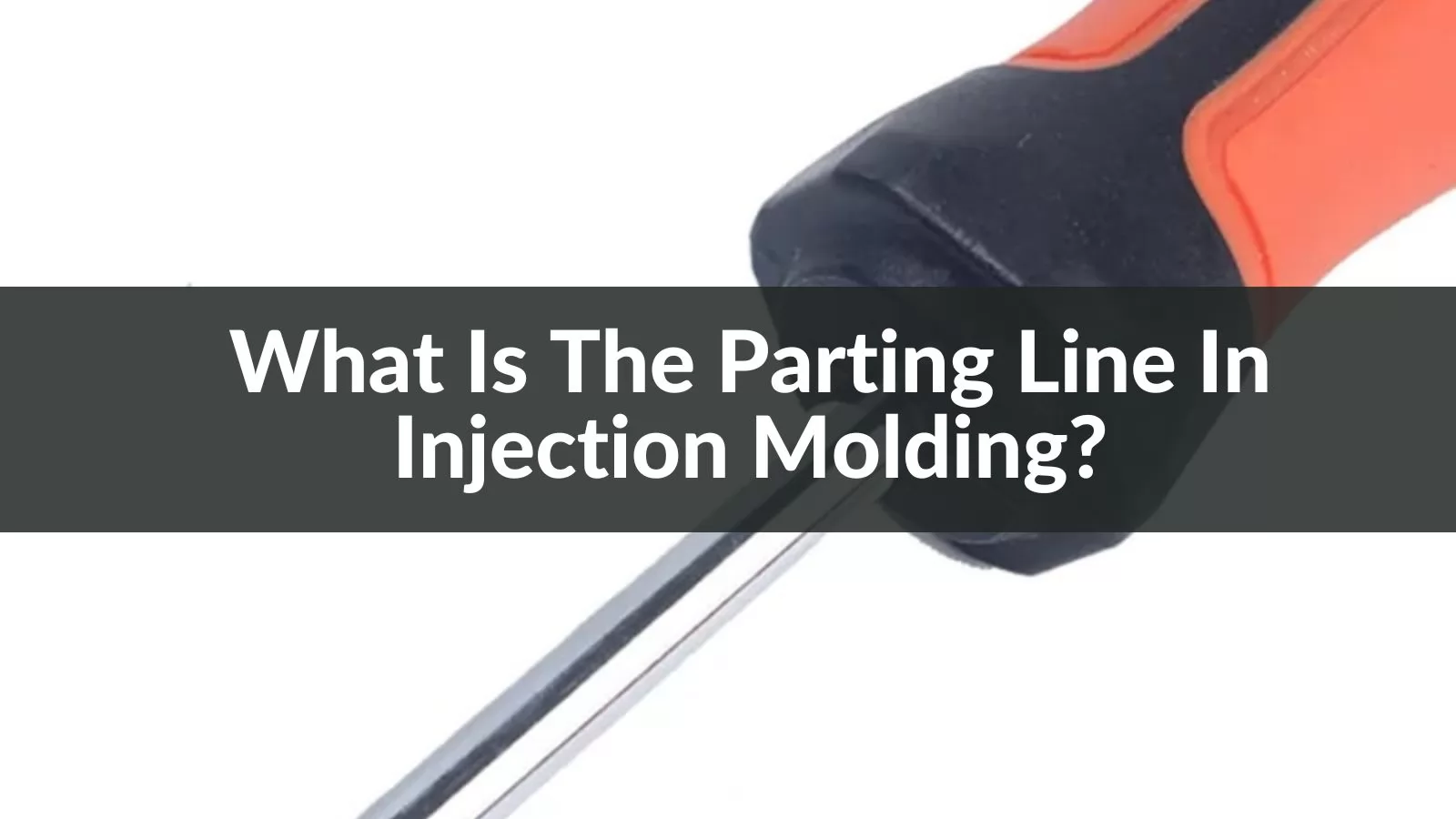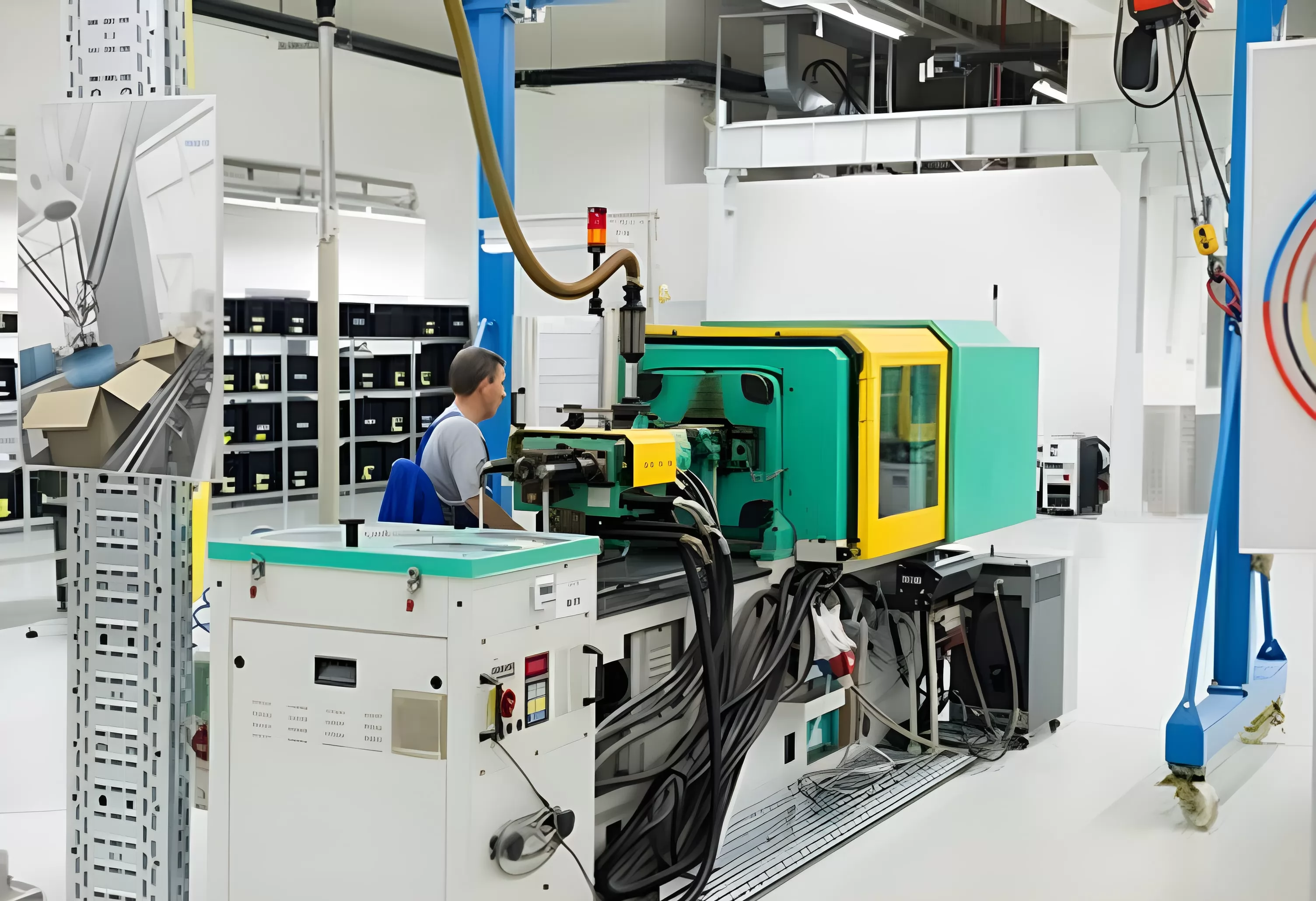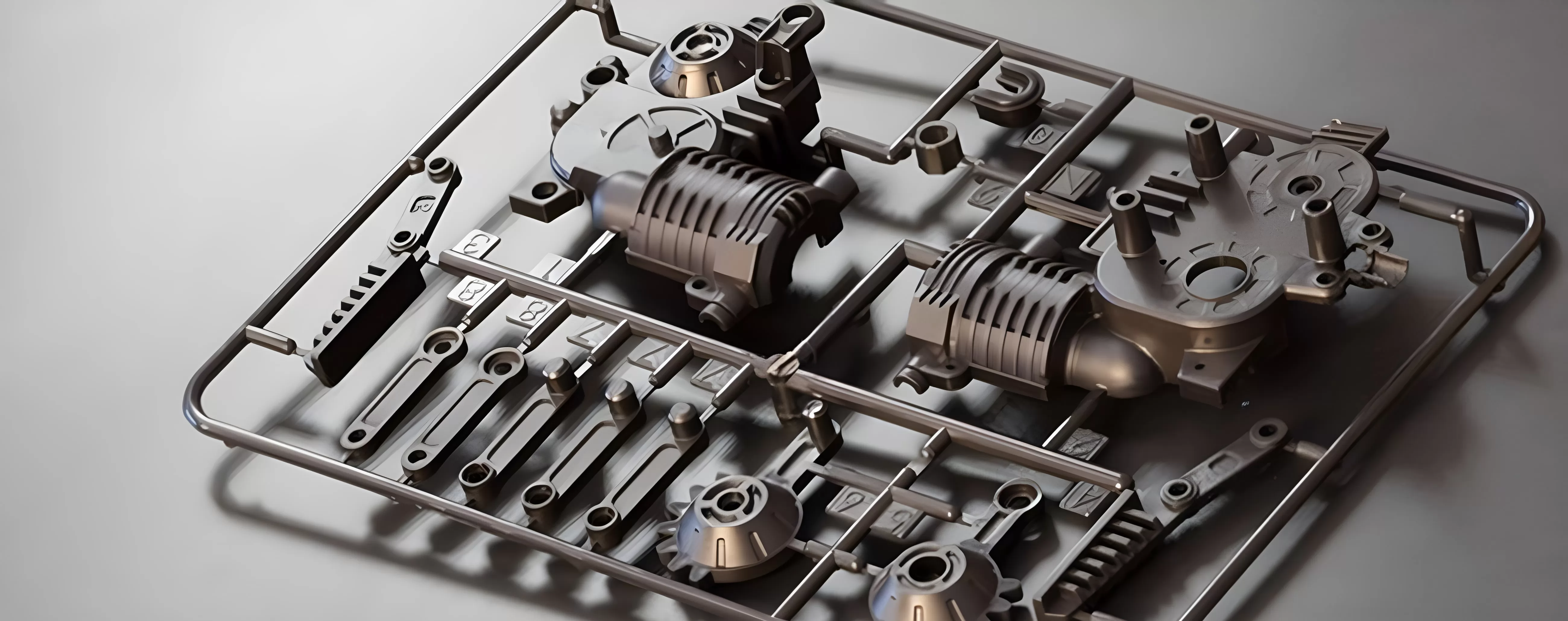
The parting line in injection molding is a critical feature in the design and manufacturing of plastic components. It marks the separation between different parts of the mold where it splits apart to release the newly formed part. Understanding its placement and implications is essential for achieving optimal product quality.
This article will delve into the importance of the parting line, its impact on mold design, and strategies for minimizing defects associated with
What are parting lines?
Parting lines in injection molding refer to the edge or line on a molded product where two different parts of the mold meet during production. These lines can be found on any plastic part produced by this method and are an inevitable result of the injection molding process. Essentially, a parting line marks the point of separation between the core and cavity halves of the mold tool. The accurate positioning of parting lines is critical as it can influence both the aesthetics and functionality of the final component. Meticulous design and precise placement ensure that flaws associated with parting lines, such as mismatch or flash, are minimized.
Purpose of the Parting Line in Injection Molding
The parting line serves a critical function in the injection molding process, acting as a demarcation where two or more different parts of a mold meet and separate. Its primary purpose is to permit proper opening and closing of the mold halves during production. The careful positioning and finishing of a parting line are essential for controlling the aesthetics and functionality of the molded part.
In ensuring optimal mold function, the parting line plays several roles: it serves as a seal to prevent plastic from leaking out of the cavity during injection; it assists in aligning mold halves precisely through locating features; it allows for component ejection without damage after cooling; and finally, it influences the overall quality of the final product by minimizing visible lines or defects.
The design phase carefully considers part locations, such that when a product requires multiple openings, slide action, or has complex shapes, these requirements will dictate how and where parting lines are created. A well-designed parting line can greatly facilitate assembly if components must fit together snugly post-molding. Therefore, while laying out parting lines may seem like a mere preliminary step, its execution significantly impacts both manufacturing efficiency and component quality.
How to Determine Parting Lines
Determining the parting lines in injection molding entails a methodical approach, involving the analysis of the mold design and the geometrical features of the part. The process typically encompasses several steps which must take into account ease of manufacturing, functionality of the part, and aesthetics.
The first step is assessing the geometry of the part to identify the deepest area in relation to the direction of mold opening. This point often dictates where the two halves of the mold will separate. The next consideration is ensuring that this location allows for easy ejection of the molded part without causing damage or excessive wear on either component.
Designers then evaluate functionalities such as assembly requirements, removing undercuts that may hinder part removal without additional mechanisms. Facets such as gate location, ejector pins placements, and cooling line routing also influence where these lines are determined.
In certain complex geometries needing side actions or lifters, designers deliberately position these elements so as to minimize their impact on both functionality and aesthetics. All while maintaining mould manufacturability and accounting for thermal expansion during processing — a critical factor that can affect how parts align at their seams.
Critical surface areas with cosmetic or functional relevance demand careful placement away from high-visibility regions to ensure product acceptance within quality standards. Finally, simulations using computer-aided engineering tools may be employed to visualize filling, cooling, warpage characteristics to further refine parting line locations before finalizing tool design.

What Causes a Parting Line?
The formation of a parting line in injection molding is an intrinsic result of the molding process. It occurs where the two halves of the mold meet and join together during the injection and subsequent cooling stages. As molten plastic is injected into the cavity of the mold under high pressure, it conforms to the shape of the mold, including the area where both halves meet. The precision with which these two mold halves align directly influences the prominence and visibility of the parting line.
Several factors can contribute to the appearance and quality of a parting line:
- Mold Design and Construction: Imperfections or wear in the mold can cause misalignment between halves, leading to more pronounced parting lines.
- Injection Parameters: Incorrect injection pressure or holding times may cause material displacement along the parting edge.
- Material Characteristics: Different materials have varying flow properties and shrinkage rates, affecting how they will form around split lines.
- Mold Wear: Regular use can lead to erosion at mating surfaces, increasing part line visibility.
- Clamping Force: Insufficient clamping force may not hold mold halves tightly enough, allowing material to seep out, hence defining a more noticeable line.
Where Is The Parting Line After Molding?
After the injection molding process has been completed, locating the parting line on a molded part is straightforward. The parting line can usually be found at the location where two different halves of the mold meet. During molding, molten plastic resin is injected into the cavity of a mold composed of two halves. When these two halves are closed and secured under pressure, they form the complete mold cavity, but also leave a seam where they come together – this seam is what yields the parting line.
The physical manifestation of this line varies depending on a few factors: mold design, complexity of the component geometry, and type of material used in molding. This means that on complex parts with multiple features such as undercuts or protrusions, there may be several parting lines. Similarly, some materials may display more pronounced lines after ejection from the mold due to their characteristics.
In practice, you will often find that on simple geometric shapes like boxes or cylinders, the parting line runs along an edge that divides those shapes halfway across their symmetry. On more complex geometries or parts with side-action molds (molds that use side-pins to create features which cannot be directly pulled off in line with the mold opening), identifying these lines can require closer inspection as they follow circuitous paths around various features of the molded component.
| Location on Molded Part | Affected by | Visibility | Implication for Quality Control |
|---|---|---|---|
| Where mold halves meet | Mold design, component geometry | Varies; sometimes pronounced | Indicator of tool wear or improper mating |
| Edges/Seams | Complexity and number of undercuts/features | Clearer on simple geometries | Deviations require further inspection |
| Around protrusions | Type and characteristics of material used | More visible in certain materials | Uniformity essential for final product |

What Types Of Parting Lines Are There In Injection Molding?
Parting lines in injection molding are classified based on their location and geometry on the mold. The most common types include:
- Straight Parting Lines: These are the simplest form of parting lines, where the separation between the two halves of the mold aligns in a straight line. They are generally easier to design and manufacture.
- Curved Parting Lines: Curved parting lines follow a non-linear path and are more complex than straight ones. They are typically used for parts that have a curved or contoured geometry.
- Stepped Parting Lines: This type involves multiple levels or steps, which accommodate for changes in part geometry. Stepped parting lines can be more challenging to design due to the changeover from one level to another but offer greater flexibility in forming complex shapes.
- Tapered Parting Lines: When an angled demarcation is required for better mold release or to meet aesthetic demands of the product, tapered parting lines are used.
- Tabbed or Locked Parting Lines: These incorporate special features, such as tabs or locks into the part line to assist with proper mold alignment and prevent sliding during operation.
How Can A Parting Line Affect Your Quality?
In injection molding, the quality of the final product can be significantly affected by the parting line. The parting line is where the two halves of the mold meet and, if not properly designed, aligned, or finished, it can lead to defects in the molded parts. These defects may include visible lines or seams on the surface which could be aesthetically unpleasing and a sign of poor craftsmanship.
Moreover, an improperly managed parting line can cause issues with fit and function in parts that must slot together or maintain tight tolerances. For precision components used in industries like aerospace or medical devices, this can compromise safety and reliability. Flash, which refers to excess material that seeps out along the parting line, is another quality concern; it requires additional labor for trimming and finishing, potentially increasing costs and affecting throughput.
Another aspect is how the parting line impacts material flow during the molding process: an unfavorably located parting line might cause uneven pressure distribution resulting in weld lines or warping. Such imperfections are often unacceptable in robust engineering applications where uniformity is mandatory for performance criteria.
Finally, considering aesthetic purposes, especially when dealing with consumer products, a prominent parting line may lead to customer dissatisfaction due to perceived low-quality standards. While some markets may tolerate minor flaws, high-end sectors typically demand flawless finishes on visible surfaces.
Difference Between Witness Line and Parting Line
A parting line refers to the boundary where two different halves of a mold meet during the creation of a plastic part. It’s an inevitable mark on the molded piece since it arises from the separation point in the mold design. The exact location of the parting line on a component is typically determined by the geometry of the piece as well as considerations regarding function and aesthetic.
On the other hand, a witness line is made when two or more parts of an injection mold do not fit perfectly tightly, often because of wear or damage to the mold or its components. This slight mismatch allows molten plastic to seep between them during injection, creating a thin line which bears witness to this imperfection, hence known as a witness line.
While both lines are marks left on an injected molded product, their causes differ significantly—a parting line results from intended design features whereas a witness line indicates possible errors or issues with mold maintenance. Given this background, distinguishing between these two types of lines is imperative for diagnosing production issues and ensuring high-quality outcomes.
| Aspect | Parting Line | Witness Line |
|---|---|---|
| Definition | Boundary where two halves of a mold meet | Mark created by imperfect mating surfaces within an active mold |
| Origin | Inherent to mold design | Resultant from wear, damage, or defects in the molding process |
| Functionality & Aesthetics | Considered during placement decisions | Typically unwanted and may indicate quality issues |
| Production Diagnosis | Indicates proper alignment according to design | Suggests potential problems with fitting or condition of molds |
| Quality Implication | Managed through strategic design | May require remedial action to maintain product quality |
In Conclusion
In conclusion, the parting line in injection molding is a critical feature that denotes where the two halves of a mold meet, impacting both the aesthetics and function of the final product.
If you’re seeking precision and quality in your injection molded components, understanding and managing the parting line is essential. Contact our expert team today to ensure your molding process delivers superior results with an optimized parting line.


